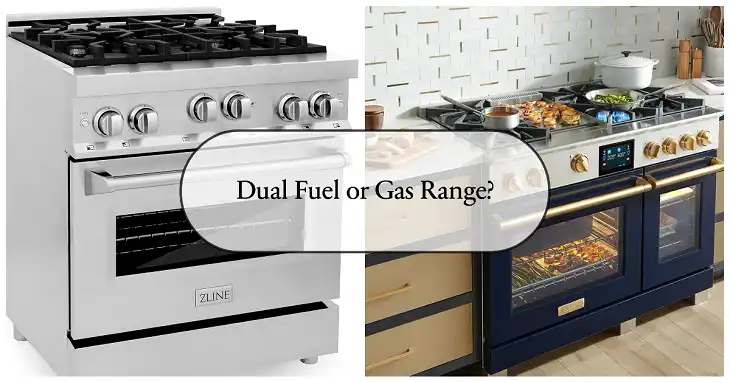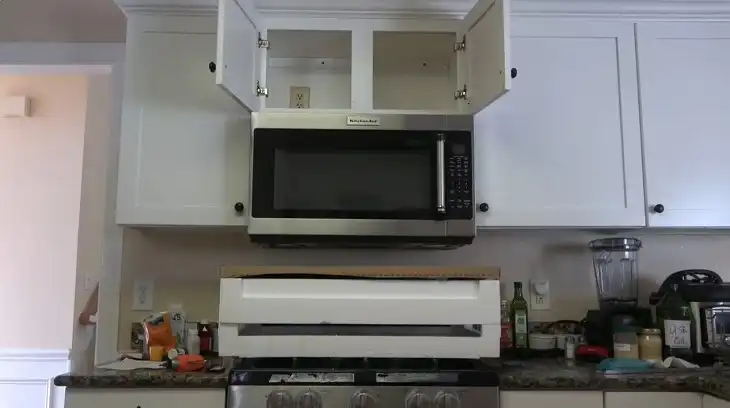Dual Fuel Range vs Gas: Which Is the Better Choice for Your Kitchen?

If you’re in the market for a new kitchen range, one of the most important decisions you’ll face is whether to go with a dual fuel range or a gas range. These two options are among the most popular for home chefs and cooking enthusiasts because of their power, precision, and reliability. However, they differ in significant ways, which can affect your cooking experience, energy usage, and even your long-term satisfaction with the appliance.
What Is a Dual Fuel Range?
A dual fuel range combines the best of both cooking worlds by featuring a gas cooktop and an electric oven. This hybrid design leverages the precise heat control of gas burners for stovetop cooking while utilizing the consistent, even heating of an electric oven for baking and roasting. This combination aims to give you the professional cooking experience often preferred by chefs and serious home cooks.
What Is a Gas Range?
A gas range consists of both a gas cooktop and a gas oven, utilizing natural gas or propane as its primary fuel source. Gas ranges are known for their quick heat-up times and the ability to achieve high temperatures efficiently, making them ideal for various cooking techniques such as searing, stir-frying, and broiling. However, the heat distribution in gas ovens can sometimes be uneven compared to electric ovens, which may result in inconsistent baking results.
How Does a Dual Fuel Range Differ from a Gas Range?
The key difference between the two lies in the oven type. While both have gas stovetops, a dual fuel range features an electric oven, which provides more even heat distribution and precise temperature control, ideal for baking. On the other hand, gas ovens excel at achieving high temperatures quickly, which is beneficial for roasting and broiling. Choosing between the two depends largely on your cooking preferences and the types of dishes you frequently prepare.
Which Is More Energy Efficient: Dual Fuel or Gas?
When it comes to energy efficiency, gas ranges are generally more efficient for stovetop cooking because gas burners transfer heat directly to the cookware, resulting in less heat loss. According to the U.S. Department of Energy, gas stovetops are around 40% more energy-efficient than electric ones. However, the electric ovens in dual fuel ranges can be less efficient compared to their gas counterparts because they take longer to heat up and consume more electricity during use.
What Are the Costs of Running Each Range Type?
The operating cost of each range depends on the local prices of electricity and natural gas. Typically, gas is cheaper than electricity in most areas. For instance, the average cost of natural gas is about $0.15 per kWh, while electricity can range from $0.13 to $0.25 per kWh depending on your location. Over time, this cost difference can add up, making gas ranges slightly more economical to operate if you cook frequently.
How Does Cooking Time Impact Energy Usage?
While gas ranges heat up quickly and are more energy-efficient for stovetop cooking, dual fuel ranges can offer time-saving advantages with their electric ovens, which maintain a stable temperature throughout the cooking process. This stability reduces the need for constant temperature adjustments, which can save energy in the long run, especially when baking for extended periods.
Which Range Type Offers Better Cooking Performance?
Gas cooktops are favored for their precise heat control and the ability to quickly switch between high and low temperatures. For example, if you need to go from a rolling boil to a gentle simmer, gas burners respond almost instantly. This responsiveness is particularly useful for techniques like sautéing and simmering delicate sauces, where maintaining the perfect temperature is crucial.
What Makes an Electric Oven in a Dual Fuel Range Ideal for Baking?
Electric ovens, as featured in dual fuel ranges, provide superior baking performance due to their even heat distribution. They use a combination of convection fans and heating elements to maintain a stable temperature, reducing hot spots and ensuring consistent baking results. For example, baking a batch of cookies in an electric oven is more likely to yield uniform results, while a gas oven may cause some cookies to brown faster on one side.
Can a Gas Oven Perform Just as Well?
While gas ovens are excellent for roasting meats and broiling due to their high heat capabilities, they can struggle with temperature consistency, especially in the lower range required for delicate baked goods. Some higher-end gas ovens come equipped with convection fans to help circulate heat, but they often still lag behind electric ovens in terms of precision and evenness.
What Are the Installation and Maintenance Considerations?
There are notable differences in installation. A dual fuel range requires both a gas line for the cooktop and a 220V electrical outlet for the electric oven. This setup can complicate installation and may require professional assistance, particularly if your kitchen lacks the appropriate wiring.
In contrast, a gas range only needs a gas line and a standard 110V outlet for basic functions like lighting the oven and powering the clock. If your home already has a gas hookup, installing a gas range can be simpler and less costly.
How Does Maintenance Compare Between the Two?
Both types require regular maintenance, but the methods differ slightly. For dual fuel ranges, the electric oven needs periodic calibration to ensure accurate temperature settings, while gas ranges may require checking the burner ignition and gas connections. Cleaning is generally easier with electric ovens, which often have self-cleaning functions. Gas ovens, on the other hand, may need more frequent manual cleaning due to residue buildup from the combustion process.
What Are the Potential Repair Costs?
Repair costs can vary depending on the range type and the specific issue. According to HomeAdvisor, the average repair cost for a gas range is around $150 to $400, while dual fuel ranges can range from $200 to $600 due to their more complex components. The need for both a gas technician and an electrician for dual fuel range repairs can also drive up the cost.
What Are the Pros and Cons of Dual Fuel Ranges and Gas Ranges?
The primary advantage of a dual fuel range is the combination of precise stovetop control with an evenly heated oven. This setup is ideal for home chefs who prioritize both high-heat cooking and professional-quality baking. Additionally, the electric oven in a dual fuel range typically comes with advanced features such as true convection and dehydration settings, adding versatility to your cooking options.
What Are the Drawbacks of Dual Fuel Ranges?
The main drawback of dual fuel ranges is the cost. They are generally more expensive than gas ranges, with prices ranging from $2,000 to $6,000 or more for high-end models. Installation can also be more complicated and costly due to the need for both gas and electrical hookups.
What Are the Advantages of a Gas Range?
Gas ranges are valued for their cost-effectiveness and speed of cooking. They are typically more affordable, with entry-level models starting at around $500 to $1,200. Additionally, the instant heat control of gas cooktops makes them ideal for quick cooking techniques, while the gas oven’s moist heat can help prevent dishes like roasted meats from drying out.
What Are the Drawbacks of Gas Ranges?
The biggest disadvantage of gas ranges is their uneven baking performance. For those who frequently bake delicate items like pastries or cakes, the uneven heat distribution of gas ovens can pose challenges. Additionally, gas ranges can be less energy-efficient for oven use and may require more manual cleaning.
Which One Is Right for Your Kitchen?
Choosing between a dual fuel range and a gas range depends largely on your cooking habits and budget. If you’re an avid baker or want a versatile range that excels in both stovetop cooking and baking, a dual fuel range may be worth the investment. However, if you primarily focus on stovetop cooking and want a cost-effective solution, a gas range is a solid choice.
What Are the Cost Considerations?
The initial cost of a dual fuel range is typically higher than that of a gas range. On average, dual fuel ranges start at $2,000 and can go up to $10,000 for professional models, while gas ranges range from $500 to $3,000. Installation costs can also be a factor, as dual fuel ranges may require additional electrical work.
Is One More Durable Than the Other?
In terms of durability, both ranges are built to last, but dual fuel ranges may require more maintenance due to the complexity of having both gas and electric components. However, high-end models from reputable brands often come with warranties that cover potential issues.
Frequently Asked Questions (FAQs)
Are Dual Fuel Ranges Worth the Money?
For those who want the best of both worlds—precise stovetop control and an even baking experience—dual fuel ranges are worth the investment. However, if your budget is tight, a gas range can still deliver excellent results.
Can I Convert My Gas Range to a Dual Fuel Range?
No, converting a gas range to a dual fuel range isn’t feasible because it would require extensive modifications to the oven and additional electrical hookups. If you want the benefits of both, it’s better to purchase a dual fuel range.
Which Brands Offer the Best Dual Fuel Ranges?
Top brands for dual fuel ranges include Wolf, Viking, and GE Café. These brands are known for their high-quality construction and advanced features, but they also come with a higher price tag.
Do Dual Fuel Ranges Require Special Installation?
Yes, dual fuel ranges require both a gas line and a 220V electrical outlet, which may involve hiring a professional for proper installation.





